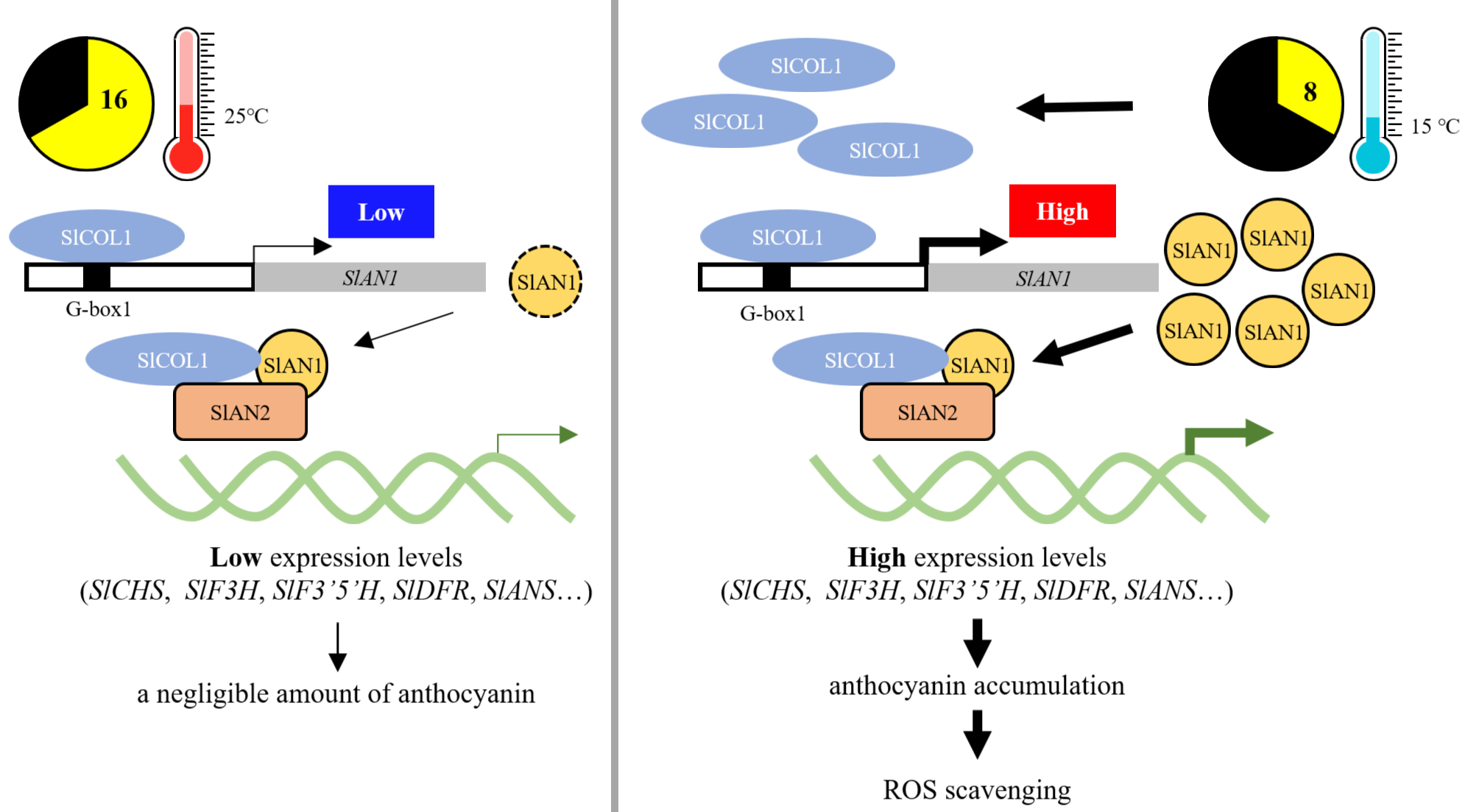Tomato CONSTANS-Like1 promotes anthocyanin biosynthesis under short day and suboptimal low temperature
Plant growth and development are precisely controlled by light and temperature during their life span. Based on the requirement of plants for the length of daylight to flower, plants can be classified into long-day plants (e.g. Arabidopsis), short-day plants (e.g. rice), and day-neutral plants (e.g. tomato). However, the mechanism by which photoperiod and seasonal changes influence the physiological response of day-neutral plants, such as tomato (Solanum lycopersicum), remains unclear. Previous studies have shown that CONSTANS (CO) is a crucial regulatory factor for the photoperiod response in plants and plays a core role in the regulation of plant flowering. However, there is still a lack of comprehensive research on the molecular functions of CO and COL in photoperiod-insensitive plants.
The research team by DENG Shulin from the South China Botanical Garden of the Chinese Academy of Sciences found that CONSTANS (CO) close homolog, CONSTANS-Like1 (SlCOL1), does not affect the flowering time of tomatoes under long-day (LD) and short-day (SD) conditions. The phenotype revealed that anthocyanin accumulation in tomato leaves was significantly induced under SD, but the anthocyanin content in the leaves of the Slcol1 mutant was significantly lower than that of the wild type. Dual-LUC, Y1H, EMSA, and ChIP-qPCR assays showed that SlCOL1 can directly bind to the G-box1 element of the Hoffman’s Anthocyanin 1 (SlAN1) promoter, a key gene in anthocyanin biosynthesis of MBW complex, and activate its expression. Meanwhile, it has been proved that SlCOL1 interacted with SlAN1. SlCOL1 enhanced anthocyanin biosynthesis by interacting with SlAN1 to promote the expression of anthocyanin biosynthesis structural genes. SD is often accompanied by suboptimal low-temperature conditions, such as in autumn in the northern hemisphere. The expression level of SlCOL1 can be significantly up-regulated under short-day and suboptimal low-temperature conditions (15℃); the accumulated SlCOL1 further promotes the accumulation of anthocyanins, which helps Reactive oxygen species (ROS) scavenging in tomato to adapt to the autumn environment.
This work was supported by grants from the National Natural Science Foundation of China, the Natural Science Foundation of Guangdong Province, and the Guangdong Science and Technology Plan Project. The link to this article:https://doi.org/10.1093/plphys/kiaf190

Figure 1. A working model of SlCOL1 regulating anthocyanin biosynthesis in tomato to acclimatize to the autumn environment.(Imaged by DENG et al)
File Download: